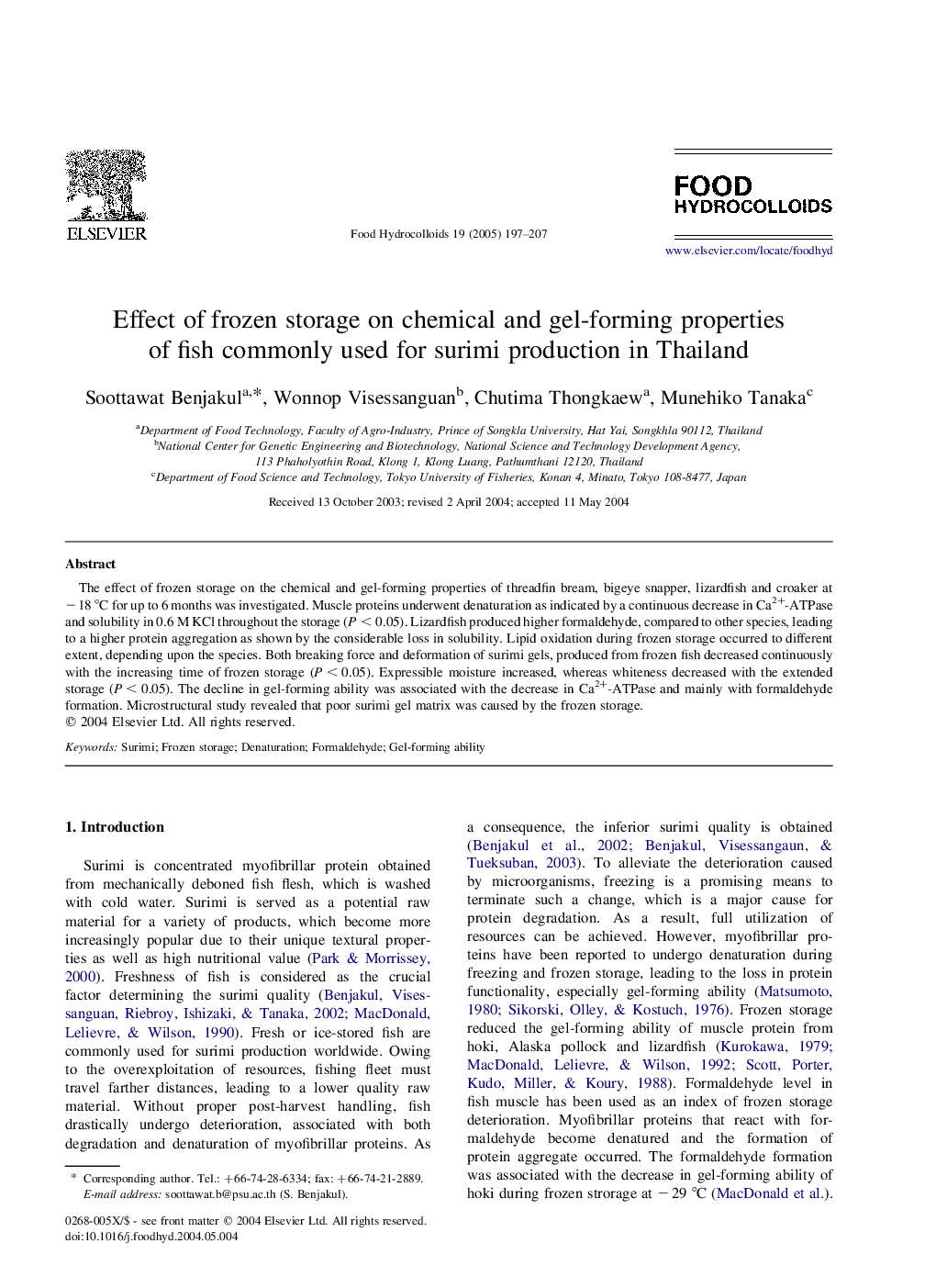| Article ID | Journal | Published Year | Pages | File Type |
|---|---|---|---|---|
| 10375845 | Food Hydrocolloids | 2005 | 11 Pages |
Abstract
The effect of frozen storage on the chemical and gel-forming properties of threadfin bream, bigeye snapper, lizardfish and croaker at â18 °C for up to 6 months was investigated. Muscle proteins underwent denaturation as indicated by a continuous decrease in Ca2+-ATPase and solubility in 0.6 M KCl throughout the storage (P<0.05). Lizardfish produced higher formaldehyde, compared to other species, leading to a higher protein aggregation as shown by the considerable loss in solubility. Lipid oxidation during frozen storage occurred to different extent, depending upon the species. Both breaking force and deformation of surimi gels, produced from frozen fish decreased continuously with the increasing time of frozen storage (P<0.05). Expressible moisture increased, whereas whiteness decreased with the extended storage (P<0.05). The decline in gel-forming ability was associated with the decrease in Ca2+-ATPase and mainly with formaldehyde formation. Microstructural study revealed that poor surimi gel matrix was caused by the frozen storage.
Related Topics
Physical Sciences and Engineering
Chemical Engineering
Colloid and Surface Chemistry
Authors
Soottawat Benjakul, Wonnop Visessanguan, Chutima Thongkaew, Munehiko Tanaka,
